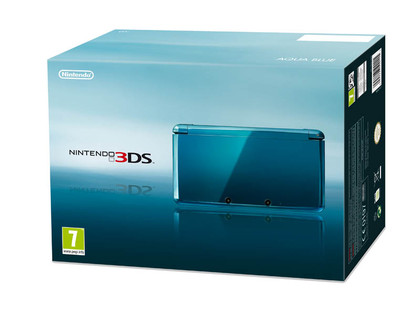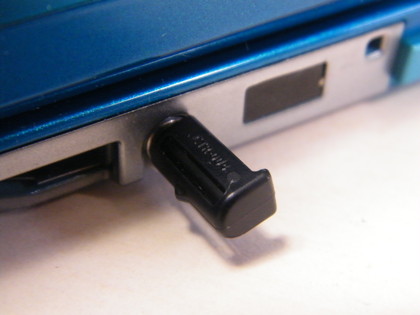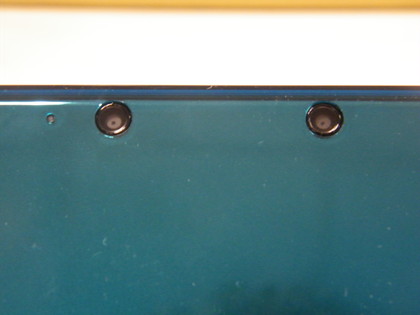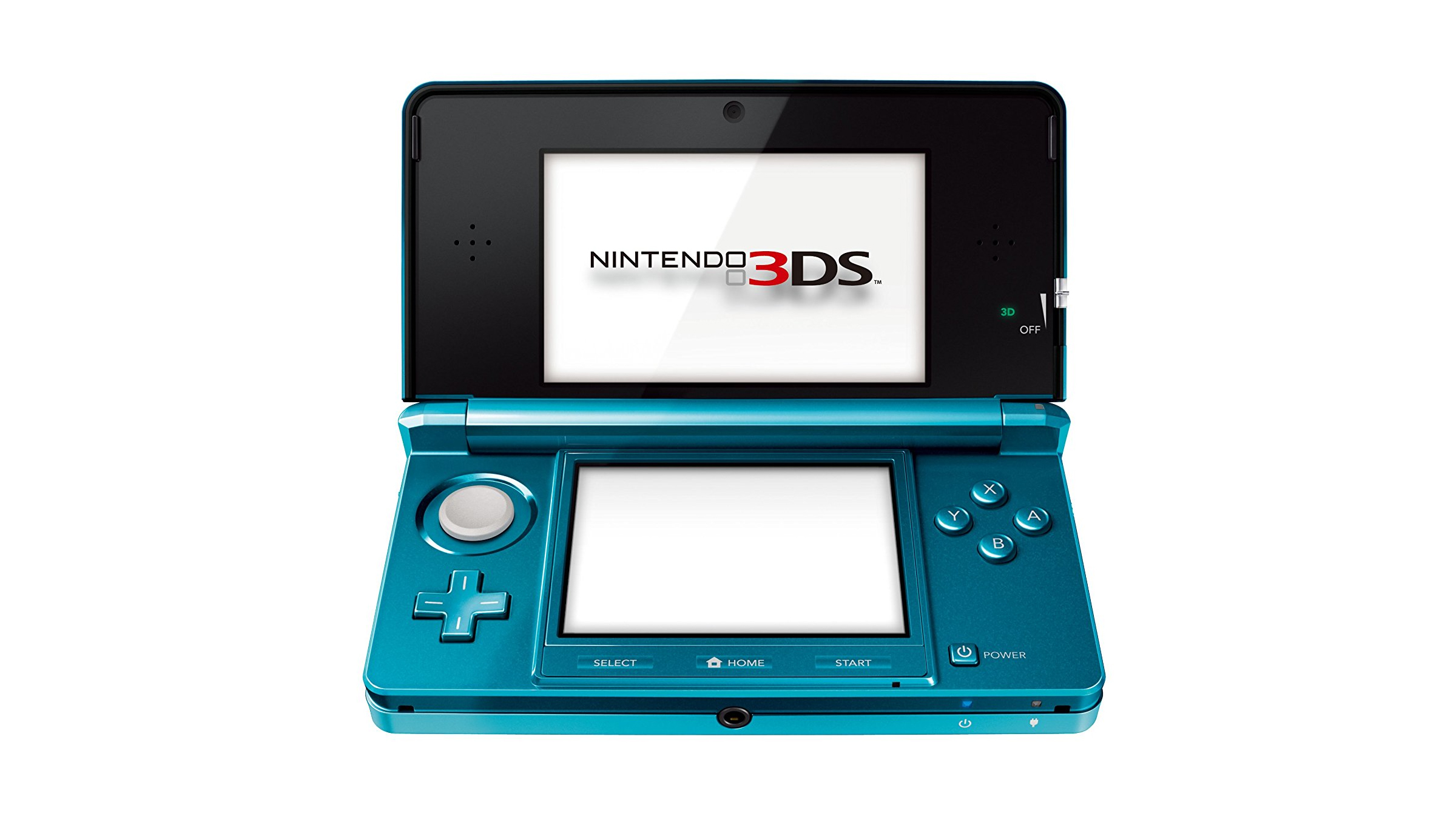Why you can trust TechRadar

The 3D effect that's conjured as a result has a focus on depth rather than throwing objects out of the screen at you all the time. How much depth exactly depends on the design of the game itself and player discretion. A slider on the side of the top panels allows gamers to adjust the level of depth, acting almost as a visual volume button.
The slider will probably be used in varying amounts as people take to 3D differently. We had the effect on maximum for the most part though and found the effect to be sharp, deep and with very little ghosting when we had the 3DS positioned in a way that hit the 'sweet spot'.

And the sweet spot is crucial. You need to hold the 3DS so that it's central, still and head on if you want the best effect. It's by no means hard to find the right angle, it's the one you'd most naturally adopt, but movement does interfere with the picture significantly.
The amount of forgiveness you get for straying depends on how 3D your image is in the first place. If the images are split to a greater extent to give the impression of more depth, the difference will be more apparent once you start to angle the screen in such a way that makes one image more prominent than the other.
The games we played
We were able to get our hands on two games; Nintendogs + Cats and Super Street Fighter IV: 3D Edition. Nintendogs + Cats boasted the greater amount of depth and so even a degree of sideways rotation of the 3DS caused flickering of the image and the occasional split-second blackout. Titling the handheld forwards and backwards doesn't have the same amount of visual degradation, though.
Street Fighter could take more movement in all directions before the image started to ghost significantly. There was generally less depth in Street Fighter, though, since the focus is on two players – there's no gameplay element that requires roaming in and out of the foreground so the background plays an aesthetic role.
But there are two camera angles in the 3D Edition of Street Fighter - the traditional side-on view is 3D only in the sense of having different layers of 2D cell-shaded art stacked on top of each other.
A second camera angle, however, rotates the side-view around so that it's more a diagonal over-the-shoulder shot and this is the angle at which to get the best 3D effect. The characters become full 3D models and the sense of depth is much more obvious and complete as objects in the background have depth to them as well as looking further away.

There're also some examples of protruding pixels here as well; because of the angle, the outside of your character's body – particularly the elbow, for example, as certain punches are thrown – noticeably occupy the foreground in comparison to your opponent who appears in the background.
The best example of a 3D image coming out of the screen we witnessed, however, was during Nintendogs + Cats, when our kitten came right up to the screen and then poked its head clearly beyond the glass.
In both cases though, like we've said, the 3D effect is more one of depth. When we're considering how much more immersive the gaming experience becomes, it doesn't work in the sense of surrounding your head and making you feel like you're actually sitting in the game, but it does make you feel like you could stick your hand into the world and touch everything.
It also enhances the graphics, not necessarily in a technical sense of quality, just in the way objects look more realistic and solid because of their added depth.
It was when our cat pushed its head right out of the screen that we started to really appreciate the extra graphical quality the 3DS has over previous iterations, regardless of the 3D wow factor. The graphics in Nintendogs & Cats are far more detailed than previous versions, showing off the extra power and resolution of the 3DS.
Using the 3D slider to turn off the effect, there wasn't too much difference in visual quality when playing both games in 2D. The lines in the backgrounds of both games became sharper in 2D but only negligibly, there a more noticeable dulling in colour with 3D mode activated though.

Outside of its gaming capabilities, the 3DS tech is also used for a 3D camera with a 640 x 480 resolution and an active pixel count of around 300,000. The photos that come out of the other end are good for a bit of pointing and cooing but we found them to be a bit grainy and the 3D effect is actually a case of have 2D images layered on a 3D plain.
For the core Nintendo audience, this will be more than impressive and a nice gimmick, but after playing 3D games that use the tech so well we couldn't help but be a bit disappointed by the camera.
Another trick in the 3DS repertoire is its augmented reality, which makes use of both the camera and the on-board gyroscope. Face Raiders, for example, is a small first person, sci-fi blaster that sees you move the 3DS around to target enemies in a similar way to GunRange for the iPhone 4.
When you miss an enemy and shoot the backdrop it breaks away, sending debris floating towards you and revealing the view from the camera.
It's a simple game but it does seem like a bit of an error of judgement since moving the 3DS around so vigorously means that you'll inevitably lose that sweet spot at some point. The 3D usage in Face Raiders, however, is comparatively less than what we've seen in the full games, with not too much moving in and out of the foreground, which is probably a good thing for the above reason.

There's also a group of more specific augmented reality games that make much more use of the tech. They're activated by putting a yellow card on a clear surface like a desk and pointing the 3DS camera at it. The best of the bunch sees the card turn into a tree covered island before your eyes giving you the task of finding and shooting a number of targets.
By moving the 3DS around the scene as if it were actually there you can look around trees, behind objects and even down holes that are two deep for your desk to accommodate in order to find the targets.
A lot of the other AR features are probably better described as tech demos more than anything, they're there to look impressive but don't actually do much. 'Star pics' is especially guilty of this; it uses separate cards with famous Nintendo faces on them which spawn statues of Link, Kirby, Mario and Samus depending on which dedicated card you put in front of the camera.
Once they're standing on your desk you can change their size, pose or glide them slowly along the table. There's nothing more to them than that, but hopefully they'll be the start of something much bigger.
There's a social element to the 3DS' as well in the Street Pass system. This automatically exchanges things like high-scores and custom characters which other 3DS portables in close proximity.
It also tries to encourage gamers to use the system and keep their 3DS active in sleep mode at least by rewarding them with a piece to a jigsaw puzzle for every new person (and their virtual Mii avatar), more interestingly, a piece to a jigsaw puzzle or XP for a basic RPG action game centred around your Mii.
The 3DS could pick up our fellow users the second we walked into the office, so it seems sharp in terms of connectivity there. The related mini-games are overly simple but will be enjoyed by gamers with a gotta catch 'em all mentality. Besides, it's more a way for Nintendo to keep 3DS consoles active so that they can automatically grab updates and software from the net using the Spot Pass system over WiFi.
